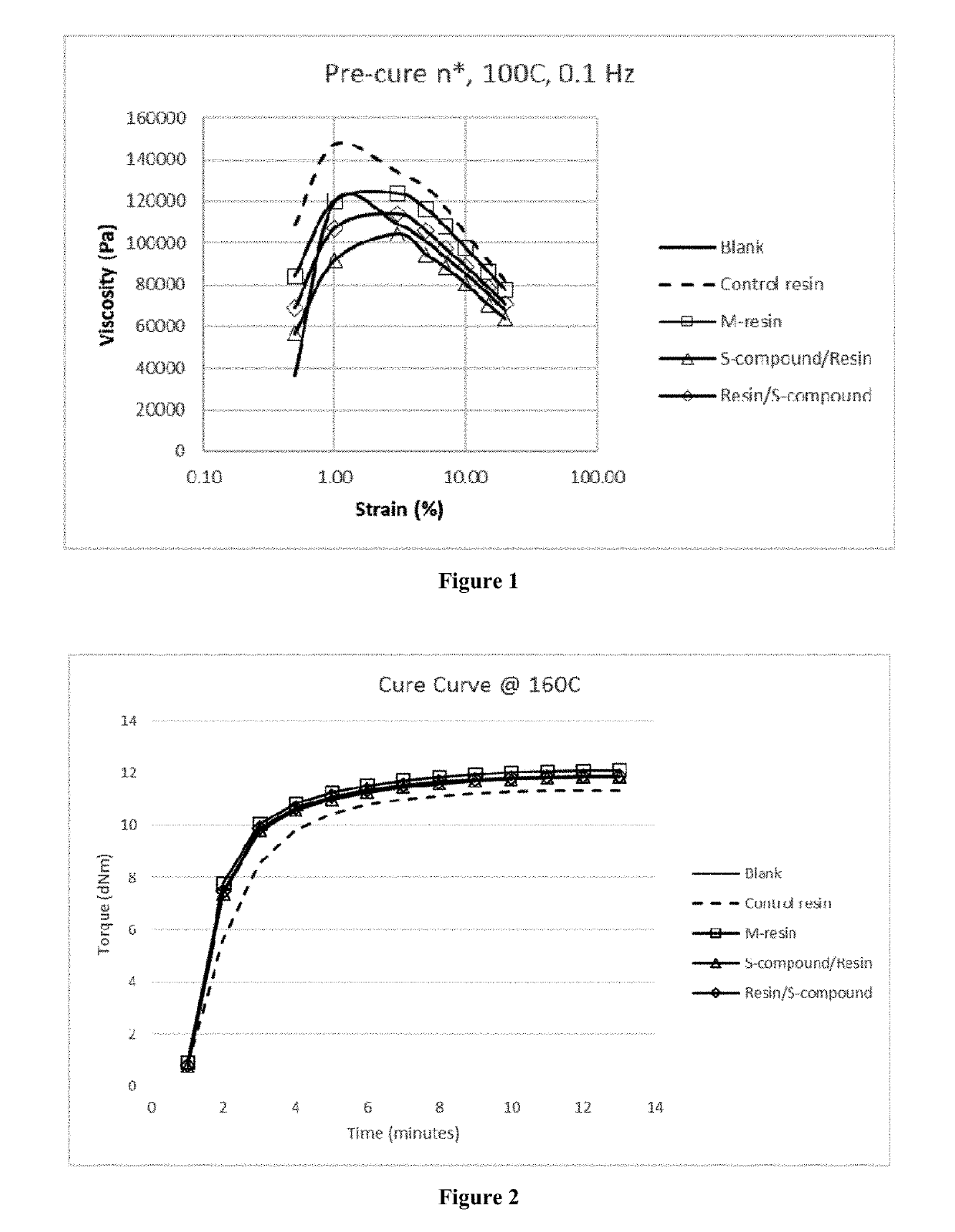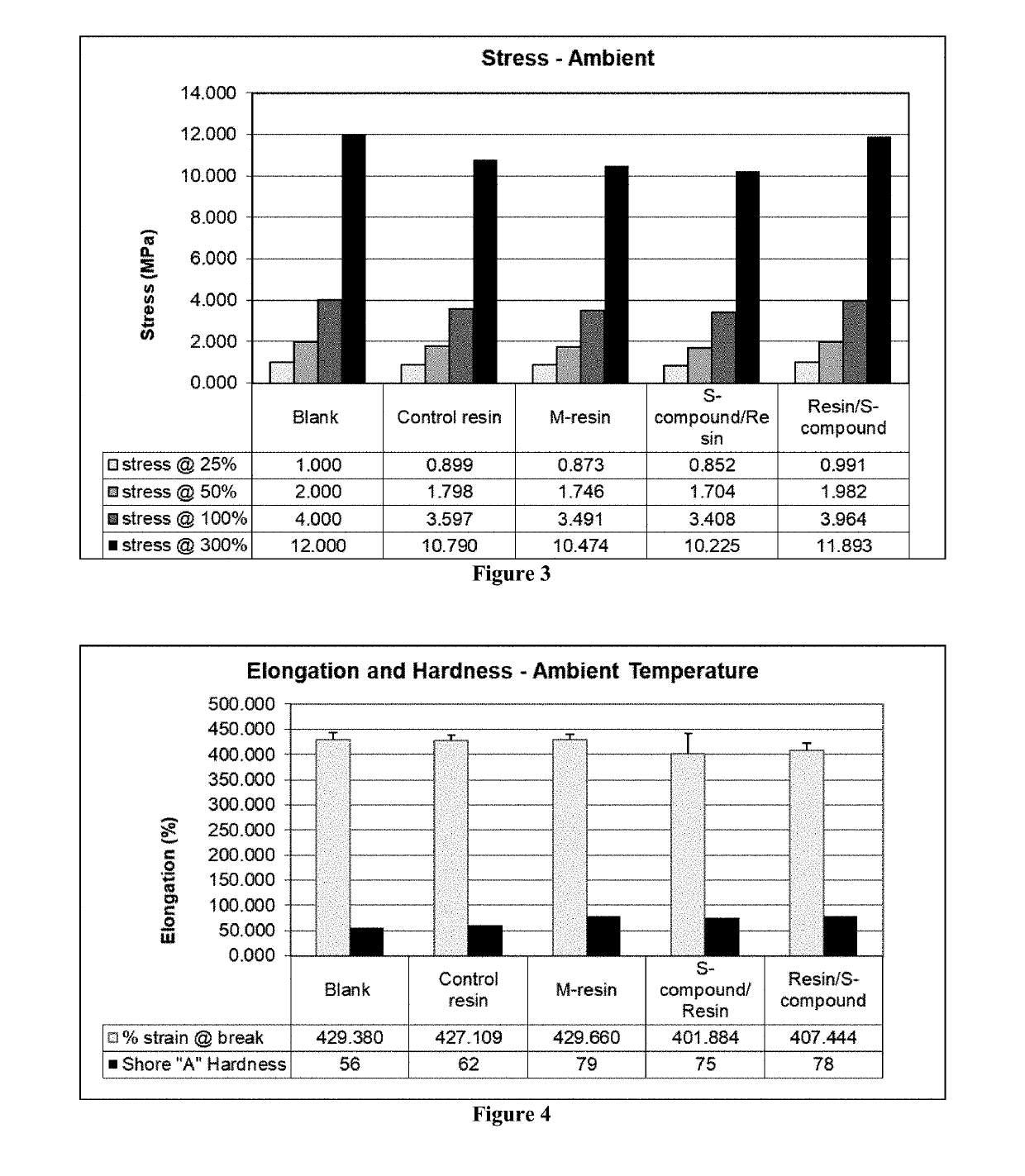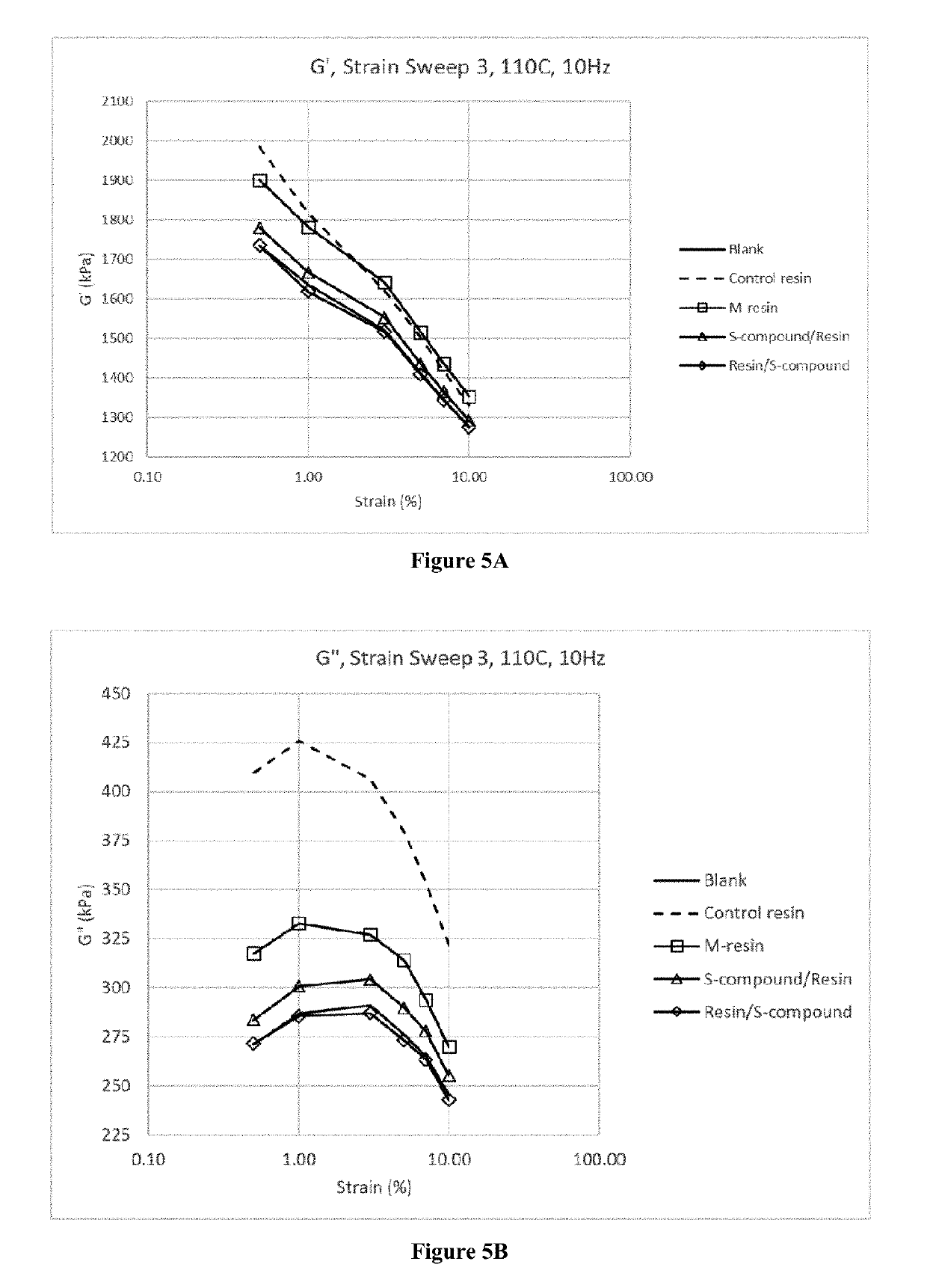Functionalized organosulfur compound for reducing hysteresis in a rubber article
a rubber article and functional technology, applied in the field of functionalized organosulfur compounds in rubber compositions, can solve the problems of increasing hysteresis, affecting the performance of rubber articles that experience repetitive motion, heat buildup upon dynamic, etc., and achieves the effects of reducing hysteresis, reducing hysteresis, and reducing hysteresis
- Summary
- Abstract
- Description
- Claims
- Application Information
AI Technical Summary
Benefits of technology
Problems solved by technology
Method used
Image
Examples
example 1a
of an Exemplary Functionalized Organosulfur Compound—2,2′-[dithiobis(2,1-ethanediylnitriloethylidyne)]bis-phenol
[0254]
[0255]Cystamine dihydrochloride (90.1 g) and 2′-hydroxyacetophenone (108.9 g) were added to a round-bottom flask along with 1-butanol (600.1 g). The contents formed a suspension upon stirring. The reactants were heated to 120° C. and refluxed for a total of 10 hours. The reaction mixture was cooled to 40° C. and sodium hydroxide (32 g) was added. The reaction mixture was stirred for a total of 1 hour during which the temperature was ramped from about 40° C. to about 73.4° C. over a 30-minute period. The reaction mixture was cooled to room temperature and vacuum filtered through a fritted Büchner funnel. Additional 1-butanol (100 g) was used to wash the product and the product isolated in the filter was dried overnight. The solid product was dissolved in dichloromethane (703.7 g) and transferred to a separatory funnel. More dichloromethane (90 g) was used to wash all ...
example 1a ′
Example 1A′: Synthesis of an Exemplary Functionalized Organosulfur Compound—2,2′-[dithiobis(2,1-ethanediylnitriloethylidyne)]bis-phenol
[0256]
[0257]Dissolve cystamine dihydrochloride (40.5 g) in DI water (242.5 g). Load the aqueous cystamine dihydrochloride solution to the kettle. Load 2′-hydroxyacetophenone (49.0 g) to the kettle, followed by addition of isopropyl alcohol (60.1 g). Turn on kettle agitation and upheat the batch to 32° C. Once at temperature load 50% sodium hydroxide (29.0 g) over a period of 20 minutes. Rinse the caustic addition lines with DI water (15.5 g) and hold the batch at temperature with stirring for 2 hours. After the two-hour hold, vacuum filter the batch to remove mother liquors and wash the product once with water (210 g) and twice with isopropyl alcohol (210 g total). Dry the solid under vacuum at 50° C. overnight to afford the disulfide product (63.9 g, 90% yield). The product was analyzed and the structure was verified by 13C NMR, 1H NMR, and ESI-MS.
example 1b
of a Modified Phenolic Novolac Resin
[0258]
[0259]A phenol novolac resin (SI Group HRJ-12952, 400.0 g) was loaded into a round-bottom flask along with 40.0 g 2,2′-[dithiobis(2,1-ethanediylnitriloethylidyne)]bis-phenol (10 wt % of the resin), the functionalized organosulfur compound prepared in Example 1A (or 1A′). The contents of the flask were mixed using a mechanical stirrer quipped with a metal agitator paddle. The reaction mixture was then heated to 160° C. After about 1 hour, the temperature reached 160° C., and the temperature set point was lowered to 120° C. After a total of 2 hours of heating, the reaction mixture were poured into a pan and allowed to cool down forming a solid. The final weight of the recovered product was 438.5 g, with a yield of 99.6%.
PUM
| Property | Measurement | Unit |
|---|---|---|
| hysteresis | aaaaa | aaaaa |
| structure | aaaaa | aaaaa |
| weight | aaaaa | aaaaa |
Abstract
Description
Claims
Application Information
 Login to view more
Login to view more - R&D Engineer
- R&D Manager
- IP Professional
- Industry Leading Data Capabilities
- Powerful AI technology
- Patent DNA Extraction
Browse by: Latest US Patents, China's latest patents, Technical Efficacy Thesaurus, Application Domain, Technology Topic.
© 2024 PatSnap. All rights reserved.Legal|Privacy policy|Modern Slavery Act Transparency Statement|Sitemap



